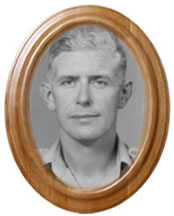General Forms And Documents
Return To General Documents Index
China Dragons - Extracts
by
Colonel Lionel John Lindsay 77668
Donated By
His daughters Monica Butt & Jackie Cant.
INTRODUCTION: Page 9
.....In the last six months of the Burma campaign most of the fighting took
place in the jungles, hills, mountains and latterly in the scrub country of
the central plains. All formations operated on a wide front - day and night,
week in and week out. Periods of relief were minimal. The 2nd Battalion, The
Royal Berkshire Regiment, remained in close contact with the enemy, with only
short pauses from the stress of battle at the sharp end of the14th Army's advance.
In the five months between December 1944 and June 1945, B Company, which I
had the privilege and good fortune to command, remained in close combat with
the Japanese for no less than 86 days. During these days and nights, we shot
directly at our enemy with rifle, machine-gun and grenade - and he at us. During
this time we shelled and mortared him and he, us. We killed and wounded the
Japanese at close quarters, and they us. His casualties were horrendous and
sometimes so were ours. Out of the immediate combat area, patrolling and defensive
measures kept us alert and on our toes, ready for the unexpected at all times.
In short, we were typical of many infantry units in this theatre in the latter
stages of the campaign. Those who served in the sections, platoons and HO of
rifle companies had little relief from battle. Sadly, few survived to relate
the experience in its entirety. Twelve out of 196 soldiers who served in B
Company did so and I was lucky to be one of them.
.....Between November 1944 and June 1945, from a total of 196 all ranks in
B Company, only 27 remained in the battalion by the end of May.
THE BREAKOUT AND MANDALAY: Page 122
.....Meanwhile, the tank was burning fiercely and its ammunition was exploding
everywhere. The crew were in the most shocking state. Right under our noses,
they baled out one by one through the burning turret, each one more badly burnt
than the last, and for some reason there were seven of them, which is more
than the normal crew. I shall never forget watching them helplessly, as we
all were: the first man had no hair and his clothes were half-burnt. It needs
no language to describe the last man. They all died later in hospital – those
who got that far. Tanks in built-up areas are very vulnerable to anti-tank
and field-guns fired at close range. L/Cpl. Lowe, our company clerk, who was
by now hardened to scenes of carnage, found himself emotionally upset by this
appalling sight and no wonder, but there was nothing he or any of us could
do.
OBSERVATIONS AND COMMENTS: Page 165
.....Among private soldiers in every unit serving on operations, there are
brave men and cowards. The former are brave because of a highly disciplined
mental balance, or because of circumstances in which there is no alternative,
or because they are unaware of danger. The latter are cowards because they
are vastly imaginative, or are physically frightened or are of low mentality
and morale. As a result of living under conditions of war with all types and
standards of men, over six months and conditions of active training over many
years, I came to the conclusion that in my company about 25 per cent were potentially
brave, about 5 per cent were potential cowards and the remainder were neither.
In other words, these remainder would not flinch or fail from their duty. They
would attack cheerfully and would defend stubbornly; they would patrol adequately
and would carry out any task with care and ability. They would, in fact, willingly
do their duty even when really afraid, with life itself at stake.
OBSERVATIONS AND COMMENTS: Page 168
.....To return to our fighting, some of us had been in daily close contact,
being fired at by enemy small-arms and shell fire for no less than 86 days
out of a total of some six months of operations and combat since November 1944.
Periods of relief and training between actions had been short and even then
we were battle alert to avoid being surprised by the Japanese. As has already
been said, psychiatric casualties normally begin to be found between 30 and
60 days of combat. What the precise criterion for making this judgment is I
do not know, but it is well authenticated by researchers. In 1944 in Italy,
54 per cent of all battle casualties in the 2nd US Armoured Division were classified
as 'psychiatric' after 44 days' combat. In the short, disastrous Arakan campaign
in 1942 in Burma, the whole of the 14th Indian Division were described by the
command psychiatrist as a psychiatric casualty. I was not aware that any of
our men were evacuated for this reason or found to be subsequently graded 'psychiatric'.
All I can say with certainty is that despite the loss of many gallant soldiers,
the long haul of our infantry fighting failed to demoralize us collectively
or individually at any stage in what had been a rough and tough initiation
to battle.

Col. Lionel John Lindsay Hill
